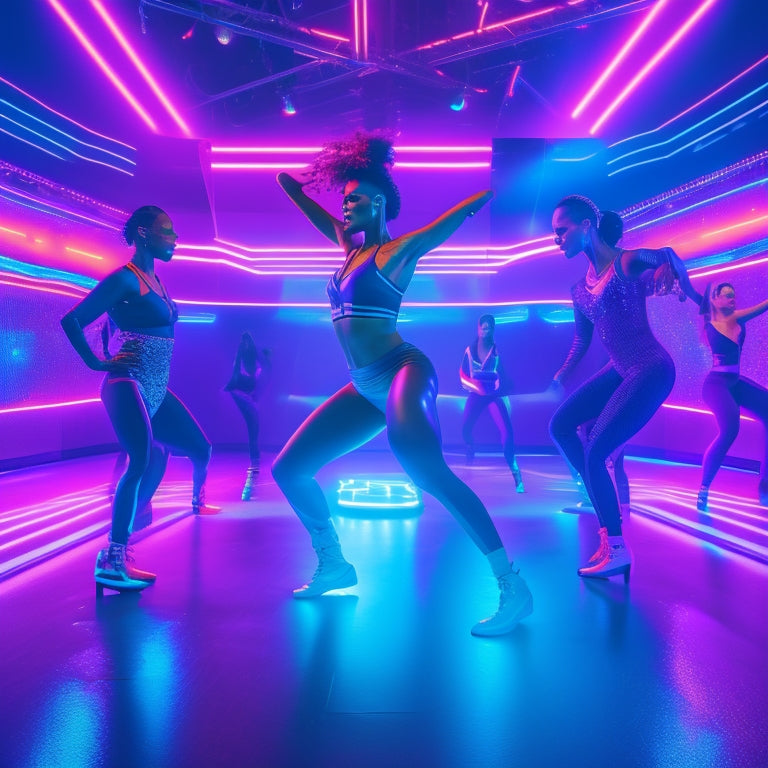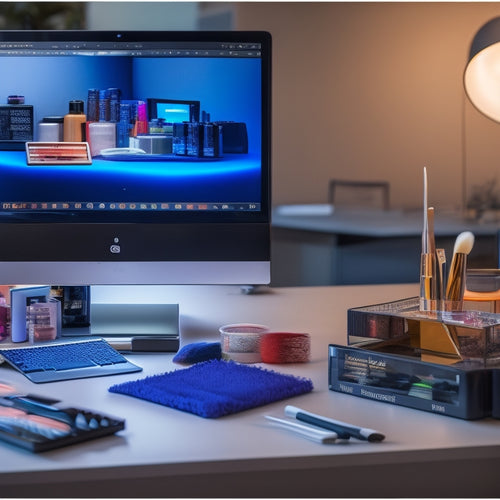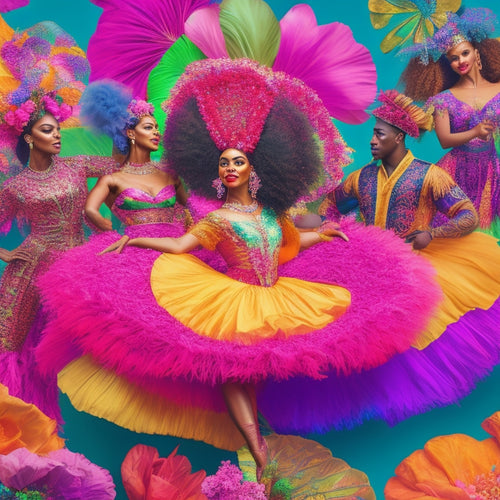
Revolutionizing Dance Through Technology: Alysia Johnson Speaks Out
Share
As a dancer and educator, I've witnessed technology transform the world of dance, liberating traditional boundaries and opening up new frontiers of creativity and self-expression. Online archives provide instant access to a vast library of dance pieces, while mobile access to choreography and visual aids has become essential. Virtual reality technology is poised to revolutionize the industry, redefining how dancers interact with rhythm and movement. With technology, dance can transcend traditional stage boundaries, connecting with a global audience and facilitating global exchange and artistic growth. There's more to this digital dance revolution, and I'm excited to share my insights.
Key Takeaways
• Digital archives provide instant access to a vast library of dance pieces, revolutionizing choreography and learning.
• Mobile access to choreography and visual aids is essential for dancers, enabling anytime, anywhere learning.
• Virtual reality technology is poised to revolutionize the dance industry, redefining how dancers interact with rhythm and movement.
• Online presence expands dancers' reach, connecting them with a global audience and facilitating collaborations and artistic growth.
• Technology increases accessibility for dancers with disabilities, transcending traditional stage boundaries and fostering inclusivity.
Digital Dance Revolution Begins
As I explore the world of dance, it becomes increasingly evident that technology is revolutionizing the way dancers learn, rehearse, and perform. Online archives of dance pieces, mobile access to choreography, and visual aids all play an essential role in the daily life of dancers.
I've seen innovative choreography emerge from online workshops, where dancers can refine their skills and learn from renowned instructors. With technology, dancers can review and re-learn movements at their own pace, perfecting their craft.
Online archives provide instant access to a vast library of dance pieces, allowing dancers to analyze and draw inspiration from iconic performances. As technology continues to evolve, I'm excited to see how it will shape the future of dance.
Rhythm and Virtual Reality
With virtual reality technology poised to revolutionize the dance industry, I'm intrigued by the potential for immersive experiences to redefine the way dancers interact with rhythm and movement.
As I explore the world of virtual reality, I'm excited to investigate how this innovation can enhance the dance experience. By merging rhythm and virtual reality, dancers can tap into new levels of expression and creativity.
Immersive experiences can simulate real-world environments, allowing dancers to experiment with movement and rhythm in ways previously unimagined. This fusion of technology and art has the potential to push the boundaries of dance, revealing new possibilities for innovation and self-expression.
Moving Beyond the Stage
Through online archives and social media platforms, dance is transcending traditional stage boundaries, allowing dancers to share their craft with a global audience and redefine the very notion of performance. As a dancer, I've witnessed firsthand the power of digital presence in expanding our reach and connecting with like-minded individuals worldwide.
This shift has opened up new avenues for online collaborations, facilitating global exchange and artistic growth.
Some key benefits of moving beyond the stage include:
- Increased accessibility for dancers with disabilities or limitations
- Global connectivity and cross-cultural exchange
- Democratization of dance, making it more inclusive and diverse
- New revenue streams through digital content creation and online teaching
Frequently Asked Questions
How Do Dancers Balance Technology Use With Traditional Dance Training?
As I navigate dance training, I balance technology use by allocating screen time for virtual practice and digital feedback, ensuring it enhances, not replaces, traditional training, and embracing cyber studios that foster artistic expression while bridging the digital divide.
Can Fashion Trends Influence a Dancer's Performance and Confidence?
As I slip into my dance attire, I ask: can fashion trends really influence my performance and confidence? Absolutely, I believe, as runway inspiration and costume freedom awaken a sense of empowerment, allowing me to embody the music, and my true self, on stage.
Do Online Dance Archives Replace the Need for Live Dance Performances?
As I reflect on online dance archives, I realize they don't replace live performances; instead, they provide virtual accessibility, preserving cultural heritage while allowing dancers to learn and appreciate diverse styles, enriching our collective cultural understanding.
How Do Social Media Platforms Impact the Discovery of New Dance Talents?
As I scroll through social media, I realize algorithmic bias influences my discovery of new dance talents, making virtual scouting a double-edged sword - it's convenient, yet limited by the algorithm's biases, shaping my perception of talent.
Can Dance Instructors Effectively Use Music to Enhance Student Engagement?
As a dance instructor, I create engaging classes by leveraging Cultural Fusion in my playlists, combining R&B vibes with modern beats, sparking Sonic Inspiration that fuels students' passion, and boosting their confidence to take risks and shine.
Related Posts
-

Why Pro Dance Makeup Artists Need Online Training
As a pro dance makeup artist, you know that keeping up with industry trends, techniques, and tools is crucial for del...
-

Streamline Your Creative Workflow: Artist's Productivity Hacks
You're tired of creative blocks, wasted time, and missed deadlines. It's time to enhance your workflow! Start by prio...
-

Dance Dress Code: Unleash Your Style
A dance dress code that prioritizes functionality and technical precision can often stifle dancers' ability to expres...


